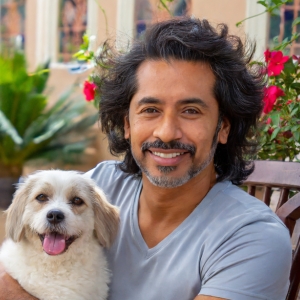Common dog aggression causes include fear, territorial behavior, lack of socialization, and illness. Poor training or past abuse may also play a role.
Understanding the factors that lead to canine aggression is crucial in preventing unwelcome incidents and ensuring both pets and people are safe. Dog owners must recognize that aggression doesn’t appear without reason. By identifying what triggers this behavior, steps can be taken to address the underlying issues effectively.
This process often involves observing your dog’s body language and reactions in various situations. Seeking professional guidance from a veterinarian or a dog behaviorist can be fundamental when dealing with an aggressive dog. Early intervention is key, as it can help modify aggressive behavior before it becomes deeply ingrained. Armed with knowledge and support, owners can work towards creating a harmonious environment that discourages aggression from taking hold.
The Many Faces Of Dog Aggression
Aggressive behavior in dogs is not uncommon. Various signs can suggest a dog feels threatened or scared. Examples include growling, baring teeth, and snapping. Dogs might also become still and rigid, or they might lunge or charge at someone or another dog. Being aware of these signs is crucial for any dog owner.
Dogs show aggression for many reasons. They might feel the need to protect their territory or they could be scared. Some might show aggression when meeting new dogs or people. Others might snap or bite when someone touches their food or toys. It’s necessary to understand that aggression is a way for dogs to communicate. Knowledge of different types of aggression helps in finding the right ways to help a dog feel safe and calm.
Genetics And Aggression
Dog aggression often links to specific breeds. Evidence shows heredity plays a key role. Genetic makeup greatly influences a dog’s temperament and behavior. Certain breeds are more prone to aggression. This is not a blanket rule. But, some dogs have aggression ingrained in their genes.
For example, guard dogs have a history of being protective. This trait can lead to aggressive behavior. Not all dogs of these breeds will be aggressive. Proper training and socialization are crucial. They can help to mitigate these tendencies.
Early Life Experiences
Early life experiences shape a dog’s behavior deeply. Puppy socialization is crucial. Dogs learn to interact safely during this time. Pets meet other dogs and people. They also encounter different situations. Without this, dogs may become fearful and aggressive.
Trauma can lead to aggression in dogs. Past abuse or negative experiences affect them. It can be due to fights with other dogs or rough handling. Such events may result in a scared and aggressive pet. Offering a safe environment helps in healing.

Credit: avsab.org
Medical Issues Leading To Aggression
Dogs can become aggressive when they are in pain. A mild injury may make a dog snappy. Serious conditions can lead to drastic behavior changes. It’s important to notice signs of pain in pets. Veterinary care can help manage pain.
Neurological disorders also influence aggression. Brain tumors or epilepsy can alter a dog’s temperament. Such conditions require expert assessment. Prompt treatment is pivotal to improving behavior. Regular check-ups can catch issues early.
Territorial And Protective Behaviors
Dogs often show aggression to guard their space. This holds for their home, yard, or any place they consider theirs. Protective behaviors also kick in when dogs sense a threat to their family or pack. They might bark, growl, or bare their teeth to defend their territory.
Reaction to strangers or other animals can trigger aggression in dogs. A dog may become aggressive when unfamiliar people or pets encroach on their space. Socialization from a young age helps to prevent these aggressive reactions. Teaching dogs that not all outsiders pose a threat is key to managing territorial aggression.
:strip_icc()/top-causes-of-aggression-in-dogs-1117877_final-01-b96150820d0644d4ba7f82621dce43d5.png)
Credit: www.thesprucepets.com
Fear As A Trigger
Fear can lead to dog aggression. Dogs might show fear in different ways. They might growl, bark, or hide. Shaking, tucking their tail, and avoiding eye contact are also signs.
Owners can help their pets to not be afraid. It is important to understand and recognize signs of fear early. Training and socializing dogs can reduce fearful aggression. Positive experiences with people and other dogs are key.
The Impact Of Training And Socialization
Training techniques can greatly affect a dog’s behavior. Incorrect methods may lead to aggression. Dogs need to understand commands. Clear communication is key. Punishment-based training often backfires. It can make dogs scared or defensive. This is true for both puppies and adult dogs.
Consistent socialization is also crucial. This means meeting people and other dogs often. Good social skills help prevent fear and aggression. Without these, dogs may not know how to behave. They could act aggressively out of fear. Early and positive experiences shape friendly dogs. Lack of socialization leads to problems.
Resources For Rehabilitation
Dog aggression stems from numerous factors. Understanding these helps in rehabilitation. Explore professional training programs for your canine friend. Experts use proven techniques to encourage positive behavior. Patience is key throughout this journey.
Consider behavior modification strategies. Gradual exposure to triggers can reduce aggression. Consistency in training is crucial. Reward-based methods yield lasting results. Always consult a vet to rule out medical causes. The goal is a happy, balanced dog.
Prevention Better Than Cure
Creating a Safe Environment starts with understanding your dog. Dogs may feel scared or threatened in new places. Making your home a comfort zone for your pet is key. Use positive reinforcement to reward good behavior.
Show your furry friends that they are safe. Avoid harsh punishments as they can lead to more aggression. Instead, set clear boundaries with gentle guidance. This helps in preventing aggression. Always ensure your dog has its own peaceful space.
Ongoing Education for Owners is crucial. Your dog can sense your emotions. Stay calm, and your dog is likely to do the same. Learn about dog body language to spot signs of stress or fear. Knowledge of these signs can prevent aggressive behaviors.
Regular training with your dog goes a long way. It creates a strong bond between you and your pet. It also teaches them to trust and respond well to you. Make learning a fun game to keep your dog happy and responsive.
Legal And Ethical Considerations
Dog bite laws differ from one place to another. It is important owners understand local regulations.
Owners may be held liable if their dog bites someone.
This means they must pay for damages and medical costs.
Proper training and socialization are key to preventing aggression.
Owners should ensure their dogs are not a threat to others.
Insurance policies might cover dog bite claims. Owners should check their coverage.
Victims of dog bites should seek immediate medical attention.
It’s also important to report the incident to the proper authorities.

Credit: pettable.com
Frequently Asked Questions
What Are Common Causes Of Aggression In Dogs?
Common causes of aggression in dogs include fear, territorial defense, pain, and possession aggression. Lack of socialization and past negative experiences can also contribute. Dominance, frustration, and protective instincts are further factors.
Why Would A Dog Suddenly Become Dog Aggressive?
A dog may suddenly exhibit aggression due to fear, past trauma, lack of socialization, dominance issues, or an underlying medical condition. It is crucial to consult a vet or a professional behaviorist for a proper assessment and guidance.
How Do You Fix Aggression In Dogs?
Consult a professional dog trainer or behaviorist to address aggression. Implement consistent training and positive reinforcement techniques. Exercise your dog regularly for mental and physical stimulation. Avoid situations that trigger your dog’s aggression. Seek veterinary advice to rule out health-related causes of aggression.
What Is The Most Common Type Of Aggression In Dogs?
The most common type of aggression in dogs is territorial aggression. Dogs often exhibit this behavior to protect their space or possessions.
Conclusion
Understanding your dog’s aggression is crucial for a harmonious relationship. Recognizing triggers and seeking professional guidance can lead to effective management and a safer environment for everyone. Remember, a happy dog is less likely to display aggression. Embrace patience and consistency in your approach to ensure a peaceful, loving bond with your furry friend.

Hello, I’m Ethan Mitchell. My passion is dog training and behavior enthusiasts. With years of experience working with various breeds, my goal at Dog Advisor Pro is to help dog owners build strong, loving relationships with their furry friends through effective training techniques. Understanding a dog’s behavior is the key to harmonious companionship. I am dedicated to sharing practical training tips that improve the lives of dogs and their owners.


